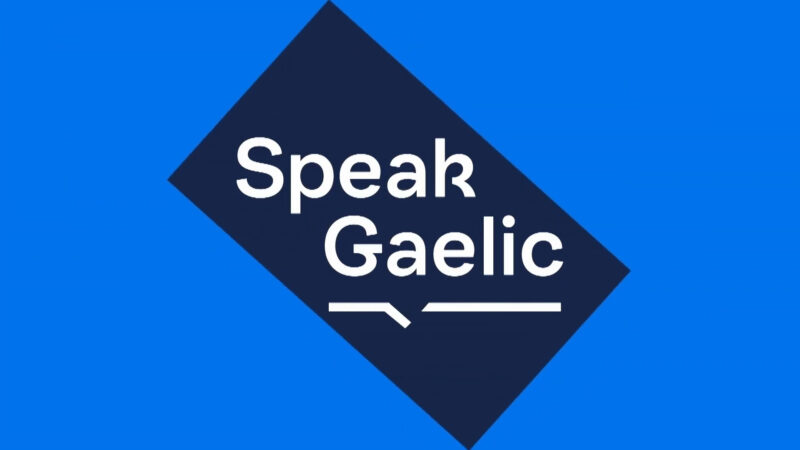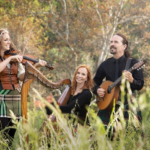In the heart of Scotland, a language that once echoed through the highlands and across the lochs is experiencing a resurgence. Scottish Gaelic, a Celtic language with a rich history and cultural significance, is making a comeback.
Despite predictions of its extinction within the next decade, the language is defying the odds, thanks to the concerted efforts of educators, influencers, and technology. This article delves deep into the current state of the Gaelic language in Scotland, exploring its decline, resurgence, and the factors contributing to its revival.
So, whether you’re a linguist, a lover of culture, or simply curious, join us as we delve into the fascinating world of the Gaelic language in Scotland. Let’s explore how a language once on the brink of extinction is making a remarkable comeback, and what this means for Scotland and its people.
The History and Decline of Gaelic in Scotland
Scottish Gaelic, a member of the Goidelic group of Celtic languages, has a rich history that dates back centuries. The language established itself as a central dialect by the 1200s, evolving from its Celtic roots to become distinctively Scottish.
By the 17th Century, the language was not only widely spoken but also extensively written and printed, marking its place as one of the main languages of Scotland. This period saw a flourishing of Gaelic literature and culture, reinforcing the language’s central role in Scottish society.
The Decline
However, the 18th Century brought significant challenges that led to a sharp decline in the use of Gaelic. The Highland Clearances, a series of forced evictions in the Northern and Western Isles of Scotland, disrupted clans, societies, and their culture.
These clearances were part of a broader socio-economic transformation that aimed to replace the traditional clan system with sheep farming, a more profitable venture for the landowners. The Highland Clearances had a profound impact on the Gaelic language.
As Gaelic-speaking communities were dispersed, the language’s use began to decrease. Additionally, restrictions on celebrating the local culture, such as wearing clan tartan and playing bagpipes, further contributed to the language’s decline.
The suppression of Gaelic in schools also played a significant role in its decline. The Society in Scotland for the Propagation of Christian Knowledge established a rule in the 18th Century that allowed teachers to punish children for speaking the local language.
This rule reinforced the widespread ideology that speaking Gaelic was improper and uncommon, further hindering its use as a spoken language. Despite these challenges, the language has survived and efforts are being made to revive the language in Scotland.
The story of Gaelic is a testament to the resilience of language and culture in the face of adversity.
The Current State

Scottish Gaelic, a language that once resonated through the hills and valleys of Scotland, is now understood by just 87,056 Scots. This number represents a steady decline that has been observed over the years.
The language’s influence, however, is still evident in the country’s landscape, with bilingual road signs and words like “loch” and “cèilidh” serving as reminders of its historical significance. The decline in the number of its speakers, particularly among the younger generation, can be attributed to several factors.
One of the main reasons is the lack of compulsory Gaelic education in most Scottish schools. This has resulted in a significant decrease in the number of speakers aged three to 17.
Over two decades, the decline has been by more than 3,000 in areas such as the Western Isles, where the language was once a mainstay.
The Cultural Shift
Despite the decline, there’s a noticeable shift in many Scottish people’s relationship to their native language. The independence movement in Scotland has been gaining steam, and with it, overt demonstrations of Scottishness have become more prevalent.
This shift has led to a decrease in the cringe factor that previously had young Scottish people playing down their culture in favor of English assimilation. In the discourse around Scottish independence, Gaelic phrases like “saor alba” (“free Scotland”) and “alba gu bràth” (“Scotland forever”) have increasingly become part of the conversation.
This resurgence of Gaelic phrases in popular discourse is a testament to the enduring cultural significance of the language.
The Role of Social Media
@jennie_dunceol
In the digital age, social media has become a powerful tool for cultural preservation and revival. This is evident in the resurgence of the Gaelic language, where young language advocates have emerged on platforms like TikTok, raising awareness of the traditional culture and language.
One such advocate is Sìneag NicDhonnchaidh, a Scottish musician who uses TikTok to introduce her followers to traditional culture, including the language and music. Her efforts, along with those of many others, are playing a significant role in bringing the Gaelic language to a new generation of speakers.
Through these platforms, Gaelic is not just being preserved; it’s being celebrated. The language is being shared with a global audience, fostering a greater appreciation for culture and sparking interest in language learning among people who may not have had any previous exposure to it.
The Revival
Education plays a pivotal role in the preservation and revival of any language, and Gaelic is no exception. Currently, the language is taught in about 10% of Scottish secondary schools, with a heavy concentration in the Highlands. This, however, is not enough to meet the growing demand for this type of education.
Many parents, recognizing the cultural significance of the language, are keen on immersing their children in Gaelic education. This has led to a renewed focus on this type of education at a grassroots level. Language revival influencers and advocates are driving this change, working tirelessly to ensure that the language is passed down to the next generation.
The Influence of Technology

In the 21st century, technology has become a powerful tool for language learning and preservation. It has played a significant role in the revival of the language. In 2019, DuoLingo, a popular language-learning platform, launched its Gaelic course. The course attracted over half a million learners in just one year, demonstrating the global interest in the language.
In September, a new learning brand, SpeakGaelic, was launched to help adults use, develop or learn the language from scratch. This platform provides an accessible and convenient way for adults to learn the language, regardless of their previous exposure to it.
Moreover, a research group at the University of Edinburgh is developing a Gaelic-speaking voice assistant that could eventually morph into Alexa or Siri. This innovative approach to language learning could make the language more accessible and appealing to the younger generation.
The Future
The future of Gaelic looks promising. According to data from VisitScotland, the Scottish government’s national tourism board, interest in Scottish Gaelic–related content increased by 72% over the period 2018–2021. This surge in interest, coupled with the Scottish government’s 2016–2021 plan for revitalizing the language, suggests a bright future for Gaelic.
When the census data finally comes out, it’s possible that we’ll see an increased number of Scottish Gaelic speakers residing in the country. This would be a testament to the success of the various initiatives aimed at reviving the language. As we look to the future, the hope is that the language will continue to thrive, serving as a vibrant reminder of Scotland’s rich cultural heritage.
FAQ
How different is Scottish Gaelic from Irish and Manx?
Scottish Gaelic, Irish, and Manx are all Goidelic languages and developed out of Old Irish. They have become distinct languages over time.
What is the status of Gaelic outside of Scotland?
Outside Scotland, a dialect known as Canadian Gaelic has been spoken in eastern Canada and Glengarry County, Ontario since the 18th century. In the 2016 national census, nearly 4,000 Canadian residents claimed knowledge of Scottish Gaelic.
How is Gaelic celebrated in modern Scottish culture?
Gaelic is celebrated as part of Scottish culture through music, television, and education. You can see it on road signs and hear it on the radio in Gaelic-speaking areas.
Last Words
Amidst the vibrant culture of Scotland, Scottish Gaelic, a language once foreseen to vanish within a decade, is witnessing a surprising resurgence. Despite a consistent decrease in its speakers, the combined endeavors of educators, influencers, and technology are rejuvenating the language’s influence.
A fresh emphasis on Gaelic education at a community level aligns with the growing demand from parents who value the language’s cultural relevance. Data from VisitScotland demonstrates a considerable uptick in language-related interest, and in tandem with the Scottish government’s revitalization strategy, the prospects for Gaelic are looking bright.






